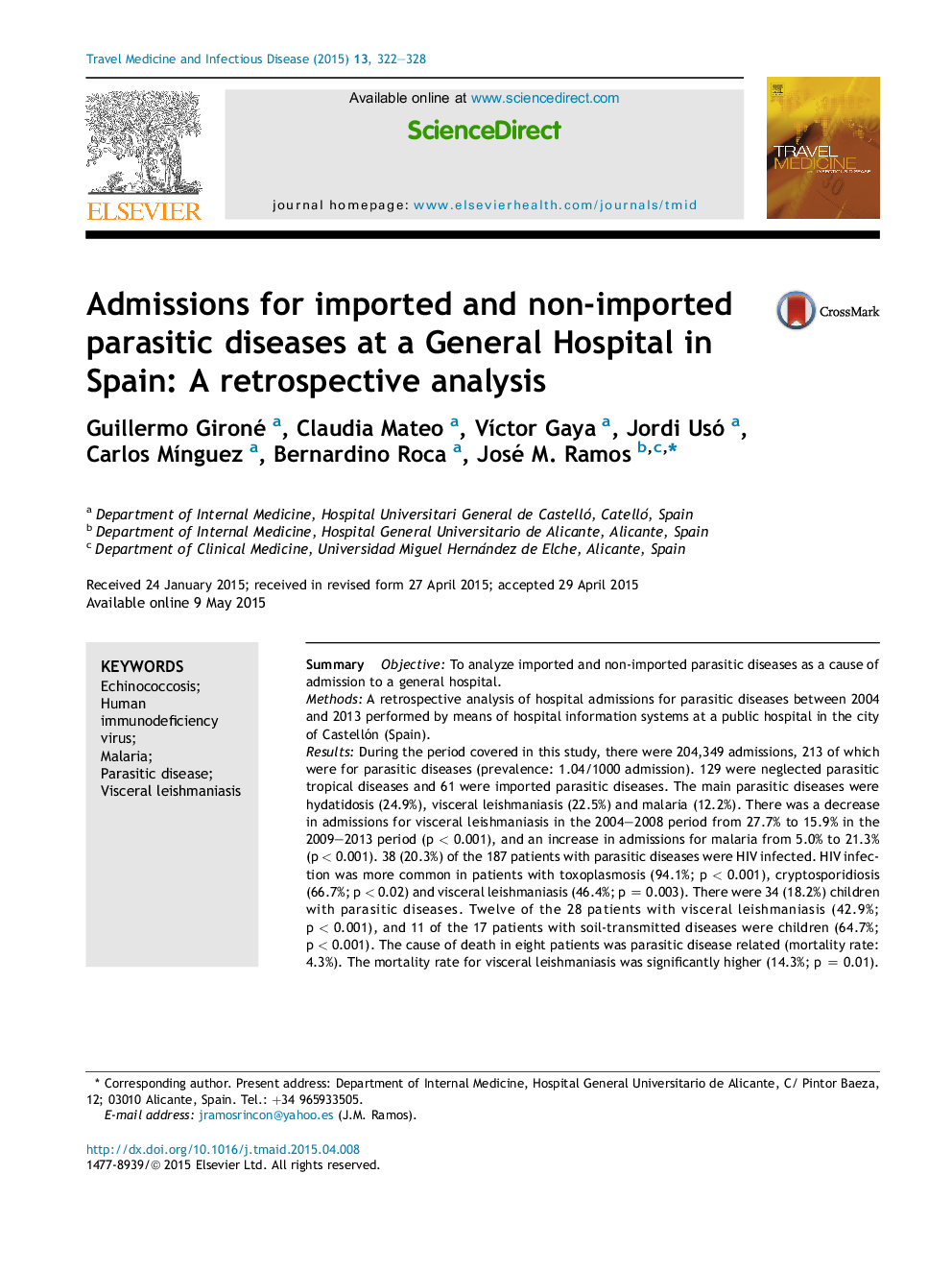| Article ID | Journal | Published Year | Pages | File Type |
|---|---|---|---|---|
| 3392944 | Travel Medicine and Infectious Disease | 2015 | 7 Pages |
•The main parasitic disease as cause of admission was hydatidosis.•The visceral leishmaniasis was second parasitic disease and decreased during study.•Admission for malaria increased during period of study.•HIV infection was more common in patients with toxoplasmosis and leishmaniasis.
SummaryObjectiveTo analyze imported and non-imported parasitic diseases as a cause of admission to a general hospital.MethodsA retrospective analysis of hospital admissions for parasitic diseases between 2004 and 2013 performed by means of hospital information systems at a public hospital in the city of Castellón (Spain).ResultsDuring the period covered in this study, there were 204,349 admissions, 213 of which were for parasitic diseases (prevalence: 1.04/1000 admission). 129 were neglected parasitic tropical diseases and 61 were imported parasitic diseases. The main parasitic diseases were hydatidosis (24.9%), visceral leishmaniasis (22.5%) and malaria (12.2%). There was a decrease in admissions for visceral leishmaniasis in the 2004–2008 period from 27.7% to 15.9% in the 2009–2013 period (p < 0.001), and an increase in admissions for malaria from 5.0% to 21.3% (p < 0.001). 38 (20.3%) of the 187 patients with parasitic diseases were HIV infected. HIV infection was more common in patients with toxoplasmosis (94.1%; p < 0.001), cryptosporidiosis (66.7%; p < 0.02) and visceral leishmaniasis (46.4%; p = 0.003). There were 34 (18.2%) children with parasitic diseases. Twelve of the 28 patients with visceral leishmaniasis (42.9%; p < 0.001), and 11 of the 17 patients with soil-transmitted diseases were children (64.7%; p < 0.001). The cause of death in eight patients was parasitic disease related (mortality rate: 4.3%). The mortality rate for visceral leishmaniasis was significantly higher (14.3%; p = 0.01).ConclusionThe main cause is endemic parasitic diseases such as hydatidosis. Visceral leishmaniasis decreased during the period covered by the study, but malaria increased.
